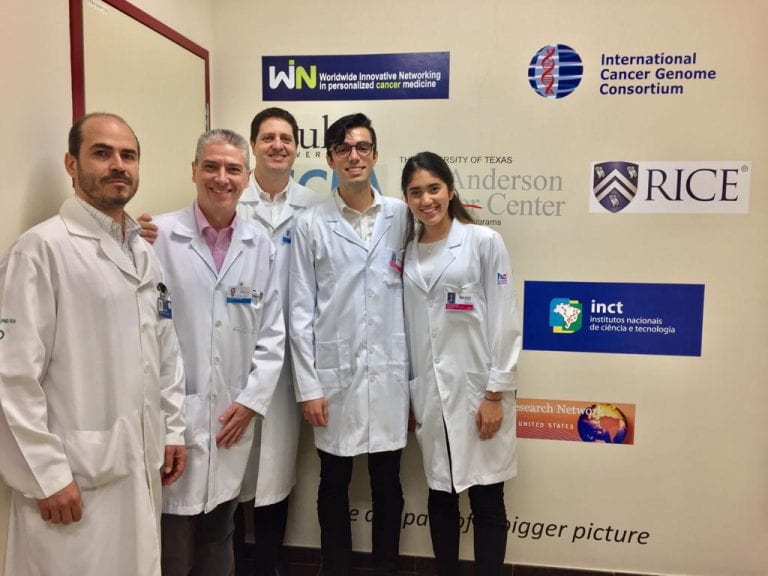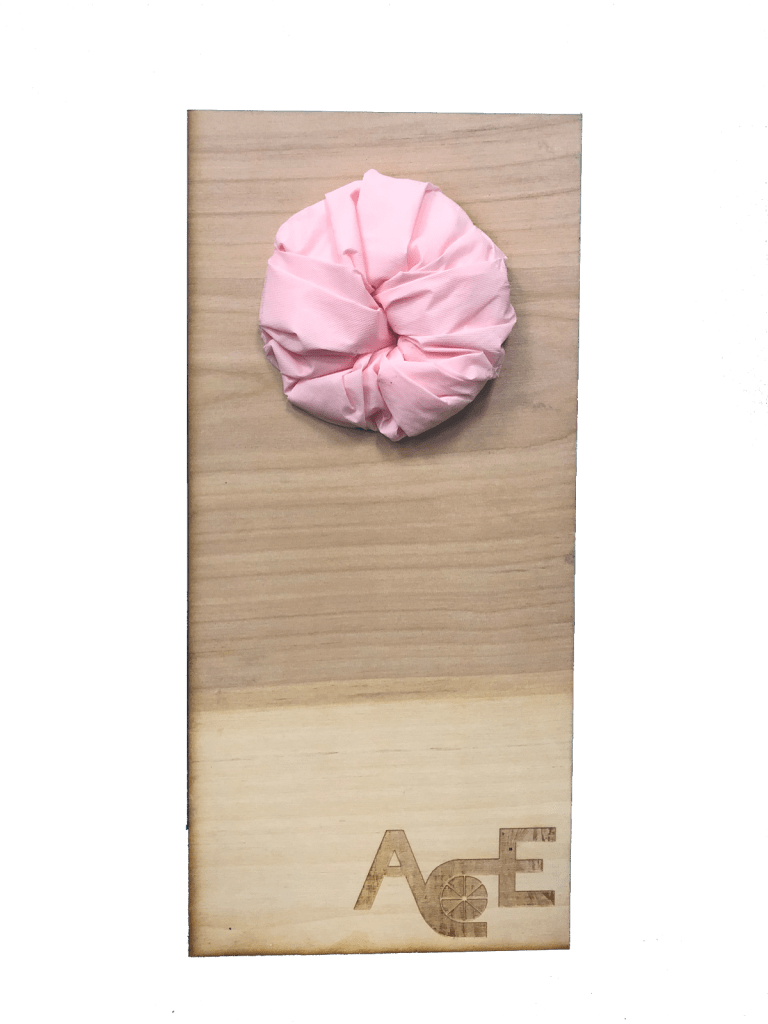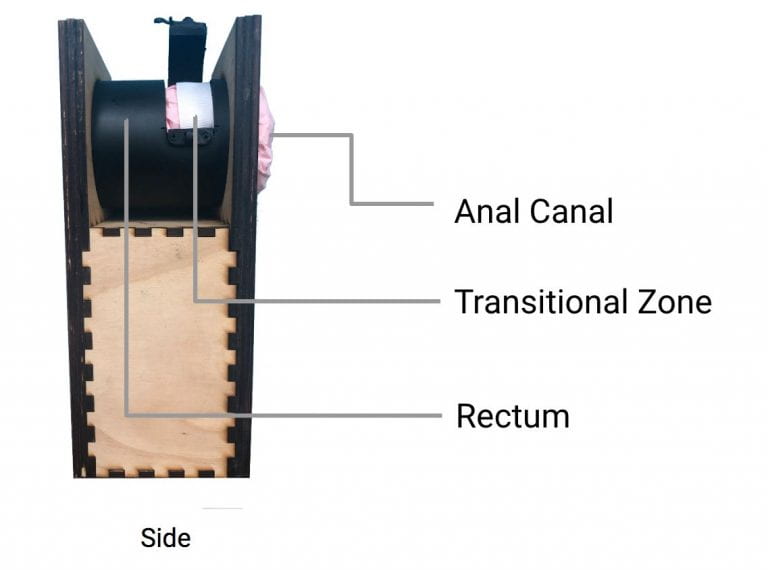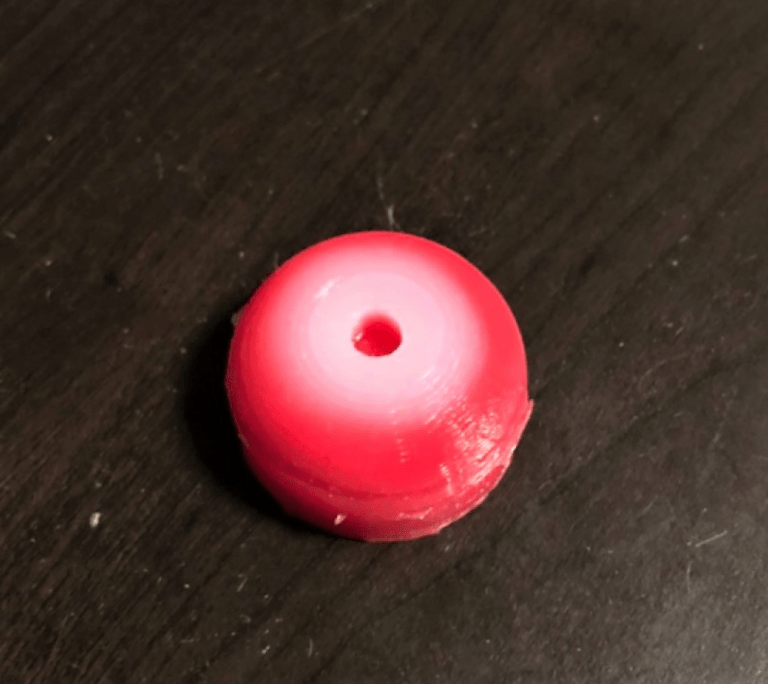Bom dia!
My eighth and final week in Barretos has come to a close and I am back in the states now. I am astounded at how quickly the time flew by, but I am also appreciative of all the experiences I have been able to have in my time in Brazil. Since this will be my last blog post I will not only be giving an update on the work Paula and I have completed this past week, but I will also be summarizing all the work we have completed in our eight weeks in Brazil. I will first start with the technologies Paula and I brought from Rice, then I will move to our app Sorrisos, and finally I will finish with some thanks I would like to give.
Pre-Prototyped Rice 360 Technologies
ACE (Anal Cancer Evaluation Model)
Project Description: ACE is a cost-effective, detailed, and interactive model of the anal canal used to teach providers how to use an anoscope for high-resolution anoscopy, adequately visualize anal tissue and apply contrast agents, and perform an anal biopsy. It allows healthcare providers to develop the skills necessary to execute precise routine screenings for anal cancer on high-risk individuals in a low-cost manner.
Feedback and Adjustments: After talking with Dr. Luis Romanologo it was concluded that ACE may better serve the hospital as a hemmoroid examination model rather than an anal cancer model. Dr. Luis suggested this change as he believes modeling the different forms of anal cancer may be difficult due to the lack of consistency from patient to patient. He did like the overall structure of the model and believes that hemorrhoids, a more consistent condition, would be better to represent considering accuracy and cost. He also believes the model would serve best as an examination and practice tool for medical students and residents who are at IRCAD, a French medical school located next to and partnered with Hospital de Amor. As a result, Paula and I created new hemroid inserts for the ACE model, which Dr. Luis thought were representative. Moving forward Dr. Luis would like for the 3D silicone printing of these model inserts to be explored as the current means of creating the inserts is through sewing each insert by hand. Therefore moving forward we will consider better means to upscale the production process.
Cervix Squad (Cervical Cancer Thermocoagulation Model)
Project Description: The cervix cancer model aims to be compatible with the previously developed Rice 360˚ LUCIA model. The model is both inexpensive and made of non-perishable material to act as a mock tissue that is effective in teaching the cervical cancer thermocoagulation treatment technique.
Feedback and Adjustments: Talking with Dr. Luis Romanologo and Dr. Julio Possati both provided positive outlooks on Cervix Squad. They commented on the fact that the texture is similar to that of a true cervix. The only adjustment they would recommend would be to deepen the hole in the center of the model as the current screening tools they use are not able to fully inserted into the model cervix. Dr. Julio suggested also making the model water based rather than using the current silicone base it has today. This is because certain forms of cervical cancer treatment involve electrical conduction and the silicone model does not allow for this form of practice. This could also be explored as a secondary model as well.
IV Drip Lock
Project Description: In low resource settings nurses will often spend a significant amount of time adjusting IV roller clamps to administer set rates of drug treatment. Often times though patients or family members will adjust this flow rate once left alone resulting in improper treatment and potential greater sickness or death. The IV drip lockbox is an inexpensive, simple, and durable device that prohibits non-clinicians from adjusting the IV rate while allowing clinical staff to adjust the drip rate in a relatively easy manner.

This is a roller clamp for an IV drip. These are often used to adjust the rate at which an IV administers fluids to a patient. These are often easy to adjust.
Feedback and Adjustments: We found that through discussing the IV drip lock with doctors that perhaps public hospitals in the surrounding area of Barretos would be interested in the lock. Hospital de Amor though does not have a need for the IV drip lock as they currently use the more modern electronic drip monitors which require a nurse known key code to adjust drip rate. Further questioning of hospitals in the surrounding area will be needed for potential implementation.
Wounder Woman (Negative Wound Pressure Therapy)
Project Description: Wounder Woman is an accessible, portable negative pressure wound therapy device. High cost, limited portability, reliance on an external power source, and loud operating noise often make current devices on the market inaccessible or impractical for patients in low-resource settings. This solution incorporates all the main functionalities of a standard wound vacuum while mitigating the cost, environmental impact, and accessibility barriers for this therapy.

Wounder Woman aims to be a low cost negative pressure device for wounds which may be too large to close in more remote areas.
Feedback and Adjustments: When we first arrived in Barretos and Dr. Vinicius Vasquez provided us with the prototype of Wounder Woman that he had we found the prototype to be in a non functional condition. Upon talking with Dr. Vinicius he commented on additional features he would like to see outside of the original scope. He would like greater suction in an improved prototype, the ability to plug into a wall for more stationary treatment and a longer battery life. Paula and I also noted that it may be beneficial to include a battery percentage screen so that a patient may be able to know at what point they need to charge the device.
Sorrisos Application
In addition to receiving feedback on all of the prototypes Paula and I brought from Rice we spent a large portion of our time developing our app Sorrisos. The concept for the app Sorrisos came from Dr. Deny Trevisani, a dentist in the palliative care unit. Dr. Deny wants a means to be able to communicate with his dental patients in more remote areas. He wants these patients to be able to send their symptoms and photos of areas of pain to him so that he may respond and let these patients know whether they can perform treatment at home or if they need to come into the hospital. These patients may be experiencing mouth cancer in any of its forms and as such the app, as described by him, needs to be able to accommodate all of these cancer forms. This final week Paula and I put finishing details on the app including finishing the doctor communication aspect of the app. Bellow you will be able to find a walk through video I created of the entire app we made in our final month in Barretos.
Upon showing the final app to Dr. Deny he was very excited on the appearance and functionality of the app, but had some recommendations for future iterations. Dr. Deny would like future iterations to have a chat platform rather than an email based communication method. Paula and I did create a messaging platform app. We found it difficult in the end, due to time constraints, to integrate the two, but we look forward to doing this in the near future. Our chat app also only allowed new chats to be created between contacts within the app when one of the contacts knew the email of another. This would protect patient identity and information, an important feature to both us and Dr. Deny. A chat platform would also mean that doctors and patients can access all information within the app rather than the current model where patients are the only ones meant to access and use the app.

Paula and I pictured with (from left to right) Dr. Deny, Dr. Ricardo, and Dr. Vinicius who all helped guide and support us through the development of Sorrisos.
Closing Thoughts
To close this blog post I would like to thank some people who have made my entire experience in Barretos, Brazil possible. I would like to thank the Rice 360 team, the group which organized and made all this possible, Carol, our coordinator in Barretos, Hospital de Amor, for allowing us to work with them, and finally Mr. Collier, who sponsored my trip.

Paula and I with Carol, our coordinator. She helped us set up meetings with doctors and provided general knowledge of Barretos and Brazil we would have been lost without.
My time in Barretos has been amazing. I had the chance to not only practice my Portuguese but also to expand upon my engineering knowledge and experience. I hope with a little more time spent working at Rice that all the above technologies can be completed and find their way back to Barretos.
Here’s to signing off for the last time, chão!





